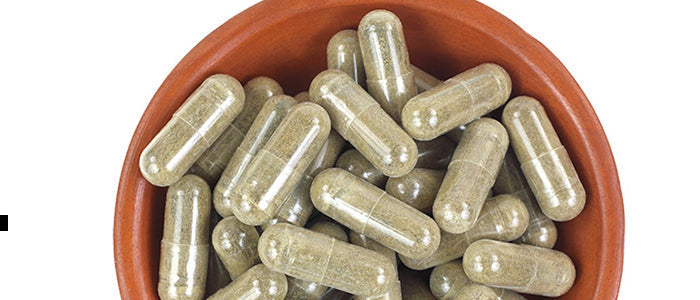


Supplements for Harder Erections: Natural Male Enhancement Tips
To Tea, or Not to Tea- the Dangers With EGCg
Once upon a time, there was a fat burner that worked phenomenally well; ephedrine combined with caffeine (E/C). FDA actions led to ephedrine and related alkaloids being pulled from the market due to a number of reported adverse events, including some tragic deaths. Yet, an immense 2008 study out of Denmark demonstrated no increased risk of death, heart attack or stroke when used as directed.1 [Some believe the primary purpose was actually to curtail the use of ephedrine as a precursor to methamphetamine production.]
In the ensuing scramble, supplement manufacturers seized any and all ingredients that might potentiate fat loss to fill the void. One common ingredient used was EGCg-standardized green tea extract (EGCg or epigallocatechin gallate). There are millennia of human green tea consumption (as a brewed beverage) demonstrating an impressive perception of health, longevity, and safety. It has been shown to reduce fatigue and appetite; fight bacterial, fungal, and viral infections, inflammation, and certain cancers; it stimulates the immune system and metabolism; improves memory, cardiovascular health and is associated with longevity.2 Many studies have shown that up to eight cups per day of green tea provide significant benefits, and this is easy to consume due to the low cost, availability, and portability of tea bags. Green tea extract benefits include enhanced metabolism and improved cardiovascular health.[Note: a cup of green tea has 10-50 mg of caffeine and up to 180 mg EGCg.]Understanding the catechins in green tea benefits can further enhance its appeal for those seeking a natural health boost. However, it is important to be aware of green tea extract side effects to ensure safe consumption.
The scientific data supporting the effect of EGCg on increasing fat loss is solid, including quantitative results reported by Dr. Abdul Dulloo, one of the eminent researchers in the field.3 In a carefully controlled study, providing a green tea extract (50 mg caffeine/90 mg EGCg) with breakfast, lunch, and dinner, the total number of extra calories burned daily increased by about 80 calories. A later review of several studies showed average daily increases in calorie burning of ~110 calories, resulting in the additional loss of 12.2 grams of fat daily.4 In addition to the control group in Dulloo's study being given a placebo, a second group was given 50 milligrams of caffeine with meals and did not show a significant increase in metabolism; only the green tea group did.3 While 80 calories is not much, it is a step in the right direction and over the long term, can support the fat-loss effect of exercise and diet. In fact, green tea consumption was shown to aid in both weight loss and weight maintenance over the long term, though the effect tended to be more evident in Caucasians than people of Asian descent.5 The benefits of green tea and weight loss are evident, supporting its role in a balanced diet. However, it is also important to be aware of potential green tea side effects that may arise from excessive consumption.
Too Much of a Good Thing?
What's not to like? Well, until the American attitude of "too much of a good thing is a good thing" entered, green tea was a gift from the gods. However, in the pursuit of greater effect, convenience, and lower cost, manufacturers concentrated the extract of green tea, generating powders with high contents of 50 percent or greater EGCg content. This can result in a huge EGCg spike, and the natural ratio of other catechins and polyphenols is grossly altered. Ingesting a couple of capsules of a highly EGCg-concentrated green tea extract is to drinking four to eight cups of steeped green tea daily … as slamming two shots of Bacardi 151 before breakfast is to enjoying a glass of wine at lunch, and a second at supper. Much like alcohol, the impact of EGCg can be lessened by consuming it with a meal, as opposed to fasting (more than triples the maximal blood concentration).6 Unfortunately, many products containing EGCg are promoted for weight loss and often suggested to be taken on an empty stomach. It's important to be aware of potential green tea extract side effects, especially when consumed in high doses as green tea extract pills side effects can vary greatly.
Granted, there have been safety and toxicity studies showing that consumption of EGCg is safe up to doses mimicking 16 cups of green tea.6,7 However, these are short-term studies and there are underappreciated factors that are glossed over. In part, this is due to the long-standing and healthful role of green tea as a beverage; it is the prototypical GRAS (generally recognized as safe)compound. However, it needs to be noted in the pharmacokinetic studies of oral EGCg compounds that there is a dosing phenomenon relating to the pharmacodynamics. Low doses of EGCg are handled well- it is similar to the "dosing" received by drinking green tea. However, when the dose is very high (800-1,600 mg in a single dose), the EGCg escalates rapidly.8 It is the equivalent of chugging nearly a gallon of green tea at once. This results in blood concentrations that are much higher (>60% increase) than would be anticipated, persisting for longer periods of time.9 At these doses, most of the test subjects experienced nausea and other discomfort. Most EGCg enters the portal (intestines-to-liver) circulation via passive diffusion (basically leaks into the bloodstream). However, when the dose is huge, the EGCg floods into the system. This suggests that either that concentration, a) damages the membranes of the large and small intestines, entering the bloodstream more easily, and/or b) enters via a low affinity transporter, and/or c) overwhelms the elimination processes.
Toxic Concentrations of EGCg
EGCg passes through the liver prior to entering the bloodstream. In "natural" concentrations, the liver handles this well. However, much like many common nutrients (e.g., iron, alcohol) and drugs (e.g., acetaminophen), toxic concentrations result in molecular and cellular damage; even organ failure and death in extreme cases. EGCg acts as an antioxidant in low concentration (e.g., drinking green tea) but in toxic dosing becomes a pro-oxidant, which can cause cell injury and death.10 In the presence of another toxic chemical (e.g., acetaminophen), EGCg may actually increase the damage, possibly by depleting intracellular stores of the antioxidant glutathione.11 This is a confusing issue, as EGCg has also been proven to protect against certain types of liver damage; dosing needs to be considered in cases. The questions then arise: does this occur in concentrations that might be achieved using dietary supplements; do the other ingredients in combination products increase the risk of harm; and can EGCg products be abused, leading to harm? Certainly, there are cases reported in the literature, and basic science showing that EGCg has been associated with liver damage. Though the human cases are too complex to definitively say EGCg caused the damage, the pattern is suggestive that in a small number of reported cases that this is a possibility.12,13 It's crucial to understand the potential effects of green tea on liver health, especially when consuming high doses of supplements.
The possible link to liver damage became tragically relevant during a series of reports of consumers taking a weight-loss supplement who suffered serious liver injury; at least three underwent liver transplantation, and one death occurred.13 Other cases of liver damage, and acute liver failure, have been reported with the use of other EGCg products as well.12,14-16 The presentation in the most affected patients was a rapid loss of liver function, with associated encephalopathy (brain damage) and related effects (e.g., bleeding, swelling, extreme weakness); biopsies demonstrated the type of cellular damage seen in drug-related damage, such as Tylenol poisoning. These events were reminiscent of the usnic acid-related cases of liver failure and death, with the notable exceptions that the usnic acid products did not have near the market penetration as EGCg, and usnic acid did not have the record of safety held by green tea.
Medicine or Poison?
Green tea is a healthy beverage that offers many health benefits to people who regularly consume the drink. However, like all nutrients and drugs, the difference between a "medicine" and a "poison" is the dose. Highly concentrated EGCg standardized green tea extracts make it very easy to mistakenly consume an excess, with the potential of harming the liver. This effect may be limited to a small percentage of people, but given the prevalence of EGCg-based products, the odds of individual cases occurring are significant. The liver utilizes the slow and continuous intake of green tea components to improve the health of the individual. However, when a flood of EGCg enters, the processing mechanisms are overwhelmed and the liver responds as though it has been "poisoned." Liver enzymes can rise dramatically, and cellular death can occur, leading to acute liver failure. Ultimately, this requires either a liver transplant or a funeral.
One should not feel discouraged against consuming green tea- it is a healthy nutrient that our bodies have adapted to over millennia. However, if considering an EGCg supplement, moderation is key if safety is a concern- and safety should always be a concern. Consuming over 400 milligrams of EGCg overwhelms the elimination pathways and leads to unexpectedly high blood concentrations. If consumed with certain other drugs or supplements that are harmful to the liver, EGCg can increase the amount of harm done synergistically. Green tea extracts should be avoided when taking acetaminophen products (e.g., Tylenol). Further, the informed consumer should weigh the risk-to-benefit when considering EGCg-based products with over 200 milligrams of EGCg content. Understanding the green tea extract safe dosage is crucial to avoid potential epigallocatechin gallate side effects. Is the loss of any additional 12 grams of fat per day worth the risk of liver damage?




